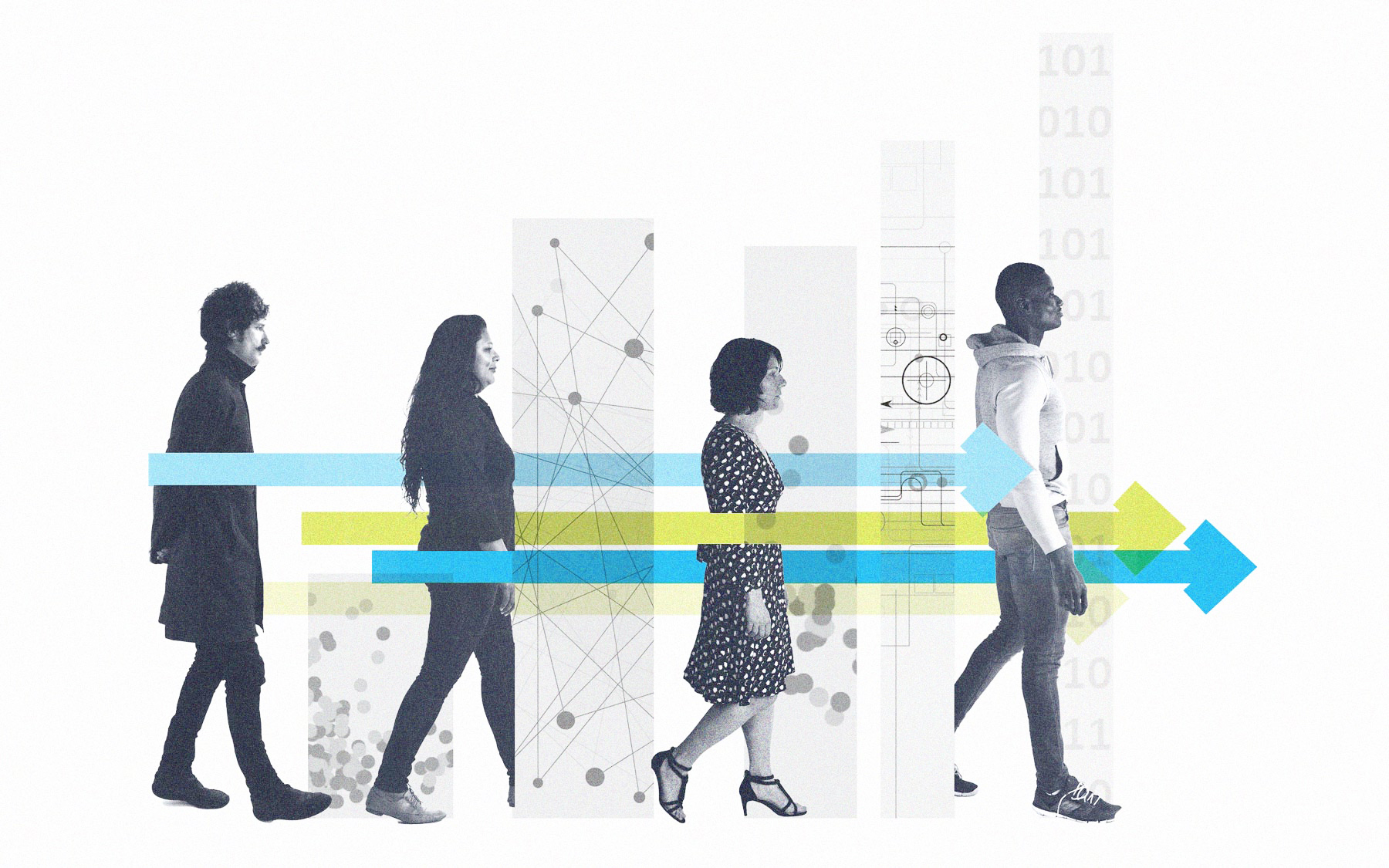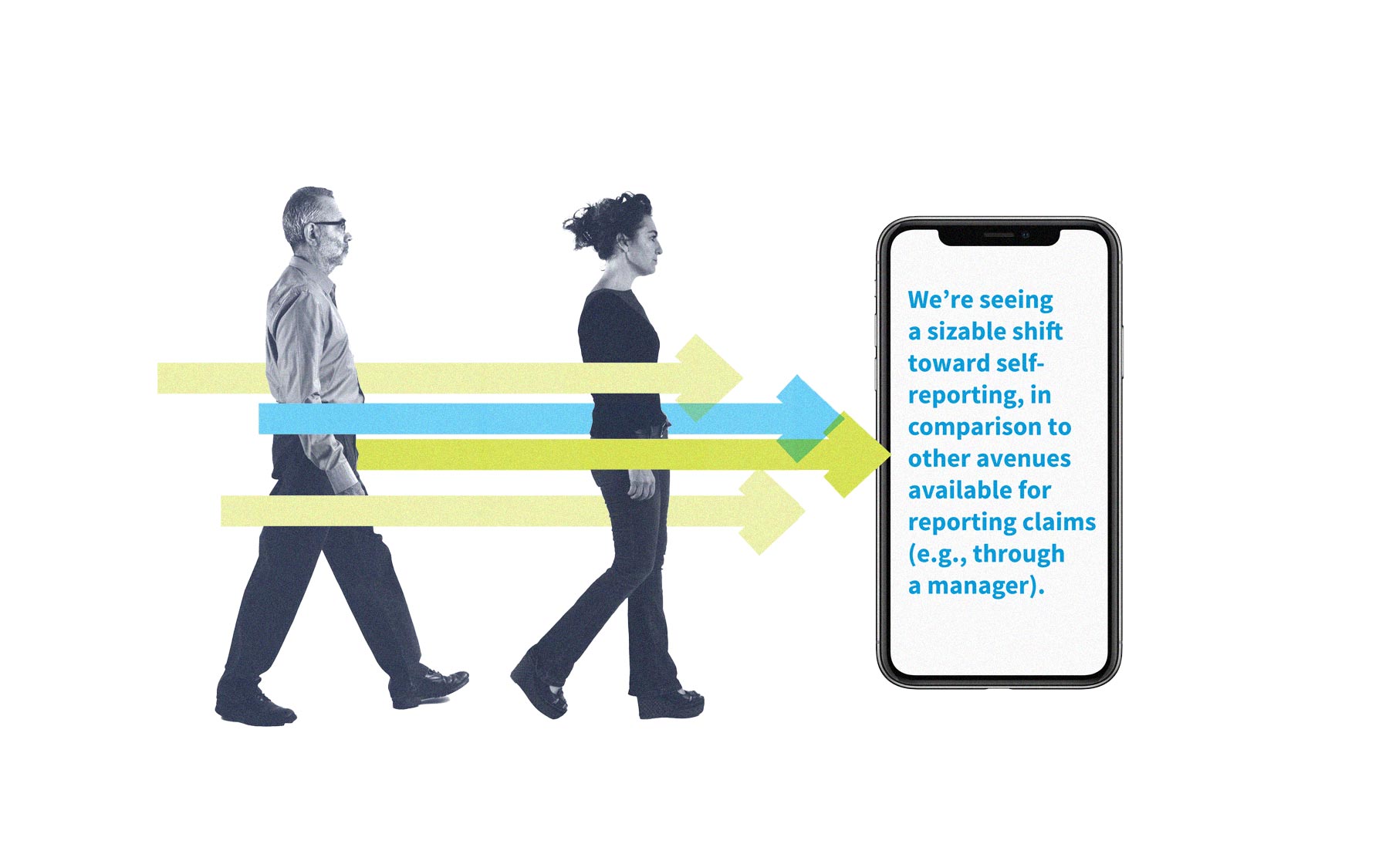BY KATHY TAZIC
managing director, client services, Sedgwick
When we think about what it takes to keep our businesses running at peak performance — particularly in these still-strange days — the obvious comes to mind: maintaining business continuity, adapting to new and evolving work models, complying with ever-changing regulations. To do this, we need good, clean data, state-of-the-art technology and a team of experts at the ready to make it all happen. It’s easy to look to the transformational power of data and technology to get it all done. It’s also easy to overlook the irreplaceable value of people and partnership as we try to continuously improve upon the experience of our customers as they interact with us.
Data versus technology
In a nutshell, technology is the vehicle that gets us to the data. And it’s great — technology brings efficiency, accuracy, speed. It creates opportunities. But the tough question is, “so what?” In other words, how are those tools being used? How are they helping improve the customer or employee experience? Technology for the sake of technology gets us nowhere.
Same with data. It has to mean something. The data you collect only has value if it helps you to tell a better story and report back to your organizations on where, and on what, to take action. In the past, we might’ve been able to say loss costs for a certain region are going up because this thing is happening, at this time, under these conditions. Today, we’re more able to pinpoint and prescribe action based on the way we translate that data: if we change this action, in this scenario, we can expect this result.
Technology and data must work together to tell a compelling story. A claim is a unique item from a data perspective. It has fixed, structured elements to it, a ton of transactional financial information. And so much of our daily lives are rooted in technology; it’s how the vast majority of us conduct our business, manage our homes and interact with one another.
When it comes to claims, we want that technology to mirror our own life experiences. To meet us where we are. To tell us “there’s a solution for that,” whatever “that” might be. Technology has to keep pace with how we live our lives, and customer expectations of their web experiences, online tools available, are only going up. As a business, you want the top data experts you can get focused on that — “data journalists” working hard to bring the story that data is trying to tell to life, and technology to make it easy to convey and interact with the storyline.
The heart behind the machine
When it comes right down to it, we must always remember that, while data and technology are great — critical, even — this is a people-centered industry. We’re people dealing with people, and we’ll always need humans to do the work.
Technology is great in that it gives our examiners greater efficiency. But above that, we need to give them more and better opportunities to influence the claims process, using that data to determine patterns, predict how they’ll change behavior, and prescribe actionable takeaways. Technology gives us the opportunity to be more holistic because it frees us from being mostly administrative.
In the claims world, we encounter people every day who have had something unexpected happen. And while there’s work to be done on that claim, there’s also a person needing care. What was once a process focused on denying a claim has become an opportunity to advocate for the person on the other end of the line.
What happens when
My best advice to clients is this: Take a step back. Ask, “what happens when…” What, for instance, does the journey look like after an auto accident? How are you communicating with someone who’s never had to file a claim before? Think about modernizing how you move beyond the traditional three-point contact rule, reaching out to your customers where they are, both geographically and generationally. Will they answer the phone to an unknown caller? Will they be more likely to respond to an email, or a text message? When it comes to customer expectations, one size most certainly does not fit all.
When we look at how claims are initially received, self-service is another area that allows employees the control they’re looking for. We’re seeing a sizable shift toward self-reporting, in comparison to other avenues available for reporting claims (e.g., through a manager). If that first reporting is in the claimant’s hands, they get a truly holistic experience right from the start. By allowing them to determine when, or even if, they speak to someone or not, you let them access their information with customized options, rather than ill-fitting requirements.
We’re seeing a growing number of clients becoming more comfortable with workers self-reporting, whether they opt to talk with someone directly or use technology. That shift has a provable impact on turnaround time and satisfaction — and it speaks directly to organizational culture.
As your customers evolve, so too should your partners. Are they making it easy for you to grow and modernize? Are they actively working, all the time, to understand your goals and determine how to help you get there? Are they empowering you to measure the customer experience — through surveys, through stewardship — as an everyday process?
The more things change
To be clear, a lot has shifted since the pandemic moved in, from where people are working, to the hours they’re working, even what they wear, and the best leaders are adjusting to — and embracing — these new approaches.
But that doesn’t mean we don’t have measurable expectations. Even if the environment has changed, our focus on quality results and outcomes remains the same. Our teams may work differently, but we’re holding them to a consistently high standard. Attitudes and practices have shifted, to be sure.
With that shift has come a broader perspective on how we — Sedgwick, yes, but also the industry as a whole — is improving the day-to-day experience for both claimants and customers. We’re looking as much at the “how” as the “how many.” Beyond just quantity, are you seeing empathy? Advocacy? With the customer in mind, building the right experience is less about using technology to look over the shoulder of the adjuster and monitor their task work — and more about the holistic process. It’s more focused on supporting the people at the heart of the process.
And that, ultimately, is what the consumer experience is all about.


